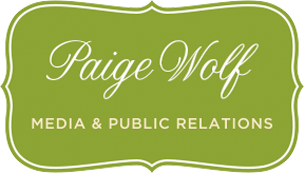There’s nothing like a good book to inspire me to broaden my horizons and think about embracing the changing world in new ways. It’s been a while since I’ve had the opportunity to read one (for others that have blown my mind see my Amazon bookshelf), so I was thrilled to be one of the first to review Sharing Is Good: How to Save Money, Time and Resources through Collaborative Consumption by Beth Buczynski.
The book explores the ways in which collaborative consumption is the true answer to a greener economy and preserving precious resources. Collaborative consumption is a new way of living in which access is valued above ownership, experience is prized over material possessions, and “mine” becomes “ours,” allowing everyone’s needs to be met with minimum waste. The beauty of a sharing economy is that it is free so anyone can participate and make a difference!
Although U.S. birthrate is one of the lowest in the world, it consumes a huge portion of the world’s resources. As a result, Americans are overweight, depressed, and in a huge amount of debt. We are so consumed with “stuff,” and as the brilliant short film The Story of Stuff illustrates, it isn’t making us any happier.
I like to think I have been a good partaker in the sharing economy. Although it is certainly possible anywhere, I think living in the city makes it even more convenient. The book says, “Sociological research shows that density is a key component of creativity, innovation, and knowledge sharing. In short, the more people there are living close together, the more likely something awesome is going to happen.” True that!
Here are some ways in which I currently participate in collaborative consumption and you can too!
Community Shared Agriculture: I purchase a vegetable and fruit share from local sustainable farmers. Find yours at Localharvest.org.
Philly Cow Share: I love this local program offering shares of local, humanely raised beef and pork with discounts for community groups.
Clothing Swaps: Whether it’s with friends, through local community swaps, or through online portals like Poshmark (Sign up with code BQNPY for $5 credit) or LikeTwice, I make sure all of my clothes find a new home and purchase or trade for most of my own wardrobe.
Swapping Baby and Kids Clothes: This is a no-brainer with kids growing so quickly! When I was pregnant with my girl and had saved all my boy clothes, I hooked up with another mom on a community bulletin board who was pregnant with a boy and had an older girl – SWAP! We both ended up with fully stocked wardrobes for the first two years of our babies’ lives!
Book Trader: Our neighborhood has two local book traders. My son loves to gather books he is tired of and trade in for new ones. And of course there is always the local library, the original hub of sharing!
Bike Share: If I had known Philadelphia would be getting a bike share, I would have never bothered buying a space-hulking bike of my own! I loved the bike share program when I traveled to Montreal and I’m thrilled to see them popping up in cities like Philadelphia and New York
Car Share: I haven’t personally used these since we own a car for my husband’s job in the burbs. But I will tell you one thing – the designated parking spots alone make it pretty awesome!
Of course, I try to buy and sell as much as I can on Ebay and Craigslist. Even putting unwanted items out on the stoop with a “Free” sign in an example of collaborative consumption!
The book includes an extensive resource guide where you can discover new places to swap and share almost everything – well, except your spouse. There are other sites for that…
How do you participate in collaborative consumption?












